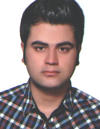| Wednesday, September 18 | |||||||||||||||||||||||||||||||||||||
| 17:30 | |||||||||||||||||||||||||||||||||||||
|
Claudia Prediger
CAST e.V.

|
BIOSIG registration
|
||||||||||||||||||||||||||||||||||||
| 19:30 | |||||||||||||||||||||||||||||||||||||
|
-
|
EAB Award ceremony and BIOSIG welcome reception
|
||||||||||||||||||||||||||||||||||||
Thursday, September 19 BIOSIG - MAIN CONFERENCE - |
|||||||||||||||||||||||||||||||||||||
| 10:00 | |||||||||||||||||||||||||||||||||||||
|
Christoph Busch
Hochschule Darmstadt

|
BIOSIG Conference Opening
|
||||||||||||||||||||||||||||||||||||
| 10:10 | |||||||||||||||||||||||||||||||||||||
|
Lena Klasen
Swedish Forensic Laboratory

|
KEYNOTE
Operational Biometric Systems and the Need for Future Research
The Swedish Police Authority is in the process of expanding applied research, coupled to the societal challenges and the possibilities brought from basic research results, to provide new tools and methods to improve capacity and support the daily operations. Building applied research at the Swedish Police Authority implies several challenges when striving for better means to prevent and handle crimes. In the end, the goal is the same - to find and bring perpetrators to justice, and thus biometric identification is a key issue. Locard's exchange principle, formulated as "Every contact leaves a trace" states that a criminal who brings traces to a crime scene, or leave the scene with traces from the scene, can be identified through these traces, such as DNA or fingerprints. Locard’s principle is still valid even if we nowadays spread numerous digital traces through all kinds of actions and leave traces in all kinds of digital media, bringing the needs for new methods that contribute to new and better way to investigate crimes, and consequently there is a need for improvements and expansion of the biometric concepts. For example AI/machine learning now contributes to another “revolution” also in the criminal justice system and examples from the process of building applied research within the field of person identification will be presented. This includes ongoing projects and biometric methods in use at the Swedish Police Authority. Moreover, the number and types of cameras rapidly increases. Using the right cameras for the problem at hand can improve the operational capacity in crime investigations. An ongoing project within the Swedish Visual Sweden initiative, on intelligent n-dimensional modelling by multidimensional sensor informatics for computer vision and visualization will be presented. The concept aims to bring 3D modelling to a new level by adding more dimensions when imaging a scene. Sensor information from n-dimensional sensor systems is thus a valuable source of data to conduct research for new means for biometric identification. For example, tracking can be supported from facial identification, thermal signature can be used to indicate human motion, color and spectral signatures from clothing can support tracking and range data to support estimation of shapes and motion trajectories.
CAST-Mitglieder können hier die Vortragsunterlagen herunterladen.
|
||||||||||||||||||||||||||||||||||||
| 10:50 | |||||||||||||||||||||||||||||||||||||
|
Christof Kauba
University of Salzburg

|
Public Perceptions, Preferences and Legal Aspects towards ATMs with Biometric Authentication in Austria
In this work we conducted a quantitative online survey to investigate (1) the general attitudes and acceptance of the Austrian public towards biometrics in general, (2) towards ATMs with biometric authentication technology, (3) the kind of biometry they prefer for this kind of application and (4) motivational factors and hindrances concerning a potential roll-out of biometric ATMs in Austria. Moreover, we give legal background information regarding the employment of biometrics in ATMs and the processing of the biometric data. Although the survey was conducted in Austria, many of the results can be transferred to the German population due to the cultural similarities, similarities in the sector of financial services and similar legal frameworks.
CAST-Mitglieder können hier die Vortragsunterlagen herunterladen.
|
||||||||||||||||||||||||||||||||||||
| 11:20 | Break | ||||||||||||||||||||||||||||||||||||
| 11:55 | |||||||||||||||||||||||||||||||||||||
|
Annalisa Franco
University of Bologna

|
Decoupling texture blending and shape warping in face morphing
This paper investigates the importance of warping and blending in face morphing. Cognitive studies show that facial texture and shape play a different role in face recognition by humans. This work aims at understanding the behavior of FRSs with respect to these two factors and to identify the morphing parameters that maximize the probability of a successful attack.
CAST-Mitglieder können hier die Vortragsunterlagen herunterladen.
|
||||||||||||||||||||||||||||||||||||
| 12:25 | |||||||||||||||||||||||||||||||||||||
|
Clemens Seibold
Fraunhofer HHI

|
Style Your Face Morph and Improve Your Face Morphing Attack Detector
Face morphing attacks aim to illegally share identification documents by using a synthetic face image that looks similar to at least two subjects. We adapt Neural Style Transfer to improve such images and study whether face morphing attack detectors are still able or can be adjusted to detect our improved attacks. Our proposed method is also compared with other means of image improvement.
CAST-Mitglieder können hier die Vortragsunterlagen herunterladen.
|
||||||||||||||||||||||||||||||||||||
| 12:55 | Lunch-Break | ||||||||||||||||||||||||||||||||||||
| 14:05 | |||||||||||||||||||||||||||||||||||||
|
Ana F. Sequeira
INESC TEC

|
Adversarial learning for a robust iris presentation attack detection method against unseen attack presentations
Despite the high performance of current presentation attack detection methods their robustness to unseen attacks is still an under addressed challenge. This work approaches the problem by enforcing the learning of the bona fide presentations while making the model less dependent on the presentation attack instrument species. The proposed model comprises one classifier for predicting the class labels; and a species-classifier. In the learning stage, an encoder is trained to help the label-classifier while trying to fool the species-classifier and this strategy is combined with an additional training objective which enforces the similarity of different species leading to a ‘species’-independent model. Results showed how the proposed strategies increased the iris PAD robustness.
CAST-Mitglieder können hier die Vortragsunterlagen herunterladen.
|
||||||||||||||||||||||||||||||||||||
| 14:35 | |||||||||||||||||||||||||||||||||||||
|
Ehsaneddin Jalilian
University of Salzburg

|
Deep Domain Adaption for Convolutional Neural Network (CNN) based Iris Segmentation: Solutions and Pitfalls
We investigate application of deep domain adaptation for CNN based iris segmentation, exploring available solutions and their corresponding strengths and pitfalls, with several major contributions: we provide a comprehensive survey of current deep domain adaptation methods according to the properties of data that cause the domains divergence, and then after selecting credible methods, we evaluate their expedience in terms of iris segmentations performance. We further analyze and compare the performance against the state-of-the-art methods under these categories, and subsequently discuss potential shortfalls of current methods and point several future directions out.
CAST-Mitglieder können hier die Vortragsunterlagen herunterladen.
|
||||||||||||||||||||||||||||||||||||
| 15:05 | |||||||||||||||||||||||||||||||||||||
|
Martin Drahansky
Brno University of Technology

|
Is There Any Similarity Between a Person’s Left and Right Retina?
Contrary to the common belief among eye specialists, we show that there is recognizable similarity between the left and right retinal images of an individual. We perform experiments where human volunteers are asked to judge whether a pair of left and right retinal images displayed side-by-side belongs to the same person or two different persons. We also use two similarity measurements, structural similarity (SSIM) and cosine similarity, to do the investigation process automatically.
CAST-Mitglieder können hier die Vortragsunterlagen herunterladen.
|
||||||||||||||||||||||||||||||||||||
| 15:35 | Break | ||||||||||||||||||||||||||||||||||||
| 16:10 | |||||||||||||||||||||||||||||||||||||
|
Benjamin Dieckmann
secunet

|
Fingerprint Pre-Alignment based on Deep Learning
Robust fingerprint pre-alignment is vital for identification systems and biometric cryptosystems based on fingerprint minutiae, where computation of a relative alignment by comparison of the fingerprints is inefficient or intractable, respectively. In this work, we present a siamese neural network (with CNNs as subnetworks) for absolute pre-alignment of fingerprints.
CAST-Mitglieder können hier die Vortragsunterlagen herunterladen.
|
||||||||||||||||||||||||||||||||||||
| 16:40 | |||||||||||||||||||||||||||||||||||||
|
Yoshinori Koda
NEC Corporation

|
Development of 2,400ppi Fingerprint Sensor for Capturing Neonate Fingerprint within 24 Hours after Birth
We aim to support the "Goal 16 Target 16.9" at the "Sustainable Development Goals (SDGs)" adopted by United Nations. This clearly points out "By 2030, provide legal identity for all, including birth registration" as a global concern. A fingerprint identification technology for neonate seems suitable solution for making a reliable identification system for the birth registration management. however, there are no market ready device for neonate fingerprint purpose. Addressing this global target, we developed a novel high-resolution fingerprint sensor having a high resolution of 2,400ppi and collected fingerprint images from neonates within 24 hours after birth through the field research in Kenya.
CAST-Mitglieder können hier die Vortragsunterlagen herunterladen.
|
||||||||||||||||||||||||||||||||||||
| 17:10 | |||||||||||||||||||||||||||||||||||||
|
|
Poster Session
|
||||||||||||||||||||||||||||||||||||
| 18:40 | Social Event: Dinner with Barbeque | ||||||||||||||||||||||||||||||||||||
| 09:00 | |||||||||||||||||||||||||||||||||||||
|
Takashi Shinzaki
Fujitsu Research Laboratory

|
KEYNOTE
Evolution and Use Cases of Palm Vein Authentication
Palm vein authentication is a vein feature authentication technology that uses palm veins as the biometric feature. Palm vein patterns are normally captured using near-infrared light via either the reflection or the transmission methods. Because veins are under the skin of humans and are not affected by the skin surface condition, a vein authentication shows stable authentication performance. Moreover, because palm vein patterns are diverse and complex, they give sufficient information to identify one individual among a large population. As a contactless type of biometric authentication, it is suitable for use in applications that require a high level of hygiene or for use in public applications. Several banks have been using palm vein authentication for ATM security since July 2004. Our palm vein authentication technology has expanded its application field by downsizing the sensor and improving the authentication performance. The palm vein authentication has been used in a variety of applications such as door security systems, login management systems for PCs, financial services, payment services, patient identification systems in hospitals and airport security systems. This presentation introduces the technical outline of palm vein authentication and its use cases.
CAST-Mitglieder können hier die Vortragsunterlagen herunterladen.
|
||||||||||||||||||||||||||||||||||||
| 09:40 | |||||||||||||||||||||||||||||||||||||
|
Bernhard Prommegger
University of Salzburg

|
Perspective Multiplication for Multi-Perspective Enrolment in Finger Vein Recognition
Multi-perspective enrolment makes finger vein recognition invariant against longitudinal finger rotation by acquiring the vein pattern from different perspectives all around the finger. For recognition only a single perspective is acquired and compared to all enrolment perspectives. In this work, a method to effectively reduce the number of perspectives needed during enrolment is presented.
CAST-Mitglieder können hier die Vortragsunterlagen herunterladen.
|
||||||||||||||||||||||||||||||||||||
| 10:10 | |||||||||||||||||||||||||||||||||||||
|
Jascha Kolberg
Hochschule Darmstadt

|
Multi-algorithm Benchmark for Fingerprint Presentation Attack Detection with Laser Speckle Contrast Imaging
Utilising Laser Speckle Contrast Imaging (LSCI) within a fingerprint sensor, it is possible to visualise blood flow beneath the skin. However, since LSCI is a quite new technology in combination with presentation attack detection (PAD), we present a benchmark of different machine learning classifiers based on four well-known feature extraction methods. Finally, the best results are fused in order to improve the PAD performance.
CAST-Mitglieder können hier die Vortragsunterlagen herunterladen.
|
||||||||||||||||||||||||||||||||||||
| 10:40 | Break | ||||||||||||||||||||||||||||||||||||
| 11:15 | |||||||||||||||||||||||||||||||||||||
|
Blaine Ayotte
Clarkson University

|
Fast and Accurate Continuous User Authentication by Fusion of Instance-based, Free-text Keystroke Dynamics
Keystroke dynamics study the way in which users input text via their keyboards, and can be used for continuous authentication systems. Using instance-based graph comparison algorithms and multiple features, we focus on reducing the number of keystrokes required to authenticate users. Our classifier outperforms the state-of-the-art with EERs of 7.9%, 5.7%, 3.4%, and 2.7% for test samples of 50, 100, 200, and 500 keystrokes.
CAST-Mitglieder können hier die Vortragsunterlagen herunterladen.
|
||||||||||||||||||||||||||||||||||||
| 11:45 | |||||||||||||||||||||||||||||||||||||
|
Vijaya Krishna Yalavarthi
University of Hildesheim

|
Gait verification using deep learning with a pairwise loss
A unique walking pattern to every individual makes gait a promising biometric. Gait is becoming an increasingly important biometric because it can be captured non-intrusively through accelerometers positioned at various locations on the human body. The advent of wearable sensors technology helps in collecting the gait data seamlessly at a low cost. Thus gait biometrics using accelerometers play significant role in security-related applications like identity verification and recognition. In this work, we deal with the problem of identity verification using gait. As the data received through the sensors is indexed in time order, we consider identity verification through gait data as the time series binary classification problem. We present deep learning model with a pairwise loss function for the classification. We conducted experiments using two datasets: publicly available ZJU dataset of more than 150 subjects and our self collected dataset with 15 subjects. With our model, we obtained an Equal Error Rate of 0.05% over ZJU dataset and 0.5% over our dataset which shows that our model is superior to the state-of-the-art baselines. |
||||||||||||||||||||||||||||||||||||
| 12:15 | |||||||||||||||||||||||||||||||||||||
|
Pendar Alirezazadeh
University of Beira Interior

|
Pose Switch-based Convolutional Neural Network for Clothing Analysis in Visual Surveillance Environment
State-of-the-art methods in pedestrian clothing analysis typically analyze clothing attributes without paying attention to the variation of human poses. We propose a pose-aware CNN architecture that helps to improve the performance of general CNN. The proposed approach improves the accuracy of a CNN to recognize the types of clothes by replacing the general CNN with pose specific ones and includes a pose estimator in order to feed the guided features input to the respective, pose-specific CNN.
CAST-Mitglieder können hier die Vortragsunterlagen herunterladen.
|
||||||||||||||||||||||||||||||||||||
| 12:45 | Lunch-Break | ||||||||||||||||||||||||||||||||||||
| 13:55 | |||||||||||||||||||||||||||||||||||||
|
Walter Scheirer
University of Notre Dame, U.S.

|
KEYNOTE
The Limits and Potentials of Deep Learning for Facial Analysis
Deep learning-based approaches for tasks in facial analysis yield remarkable performance, but do they have any practical limits? Moreover, with the flexibility afforded by artificial neural networks, what new potentials does such technology open up? In the first part of this talk, the limits of convolutional neural networks (CNNs) for face recognition will be assessed via a new evaluation regime grounded in psychological experimentation. Scientific fields that are interested in faces have developed their own sets of concepts and procedures for understanding how a target model system (be it a person or algorithm) perceives a face under varying conditions. In computer vision, this has largely been in the form of dataset evaluation for recognition tasks where summary statistics are used to measure progress. While aggregate performance has continued to improve, understanding individual causes of failure has been difficult, as it is not always clear why a particular face fails to be recognized, or why an impostor is recognized by an algorithm. Importantly, other fields studying vision have addressed this via the use of visual psychophysics: the controlled manipulation of stimuli and careful study of the responses they evoke in a model system. In this talk, I will suggest that visual psychophysics is a viable methodology for making face recognition algorithms more explainable. A comprehensive set of procedures is developed for assessing face recognition algorithm behavior, which is then deployed over state-of-the-art CNNs and more basic, yet still widely used, shallow and handcrafted feature-based approaches. In the second part of this talk, the potential of CNNs for describable visual facial attribute modeling will be explored. Attributes are now commonplace in human biometrics and affective computing, with existing algorithms even reaching a sufficient point of maturity for placement into commercial products. These algorithms model objective facets of facial appearance, such as hair and eye color, expression, and aspects of the geometry of the face. A natural extension, which has not been studied to any great extent thus far, is the ability to model subjective attributes that are assigned to a face based purely on visual judgments. For instance, with just a glance, our first impression of a face may lead us to believe that a person is smart, worthy of our trust, and perhaps even our admiration — regardless of the underlying truth behind such attributes. Psychologists believe that these judgments are based on a variety of factors such as emotional states, personality traits, and other physiognomic cues. But work in this direction leads to an interesting question: how do we create models for problems where there is only measurable behavior? Here I will introduce a regression framework that allows us to train predictive models of crowd behavior for social attribute assignment. Over images from the AFLW face database, these models demonstrate strong correlations with human crowd ratings.
CAST-Mitglieder können hier die Vortragsunterlagen herunterladen.
|
||||||||||||||||||||||||||||||||||||
| 14:35 | |||||||||||||||||||||||||||||||||||||
|
Christoph Busch
Hochschule Darmstadt
|
Awards/ Closing Remarks
|
||||||||||||||||||||||||||||||||||||
Wenn Sie noch Fragen haben, wenden Sie sich bitte an:
Christoph Busch
Hochschule Darmstadt
Simone Zimmermann
CAST e.V.
Tel.: +49 6151 869-230
E-Mail: simone.zimmermann![]() cast-forum.de
cast-forum.de
| ID:SMART 2026 Workshop | 18.-19.02.2026 |
| Recht und IT-Sicherheit | 05.03.2026 |
| 25th International Conference of the Biometrics Special Interest Group (BIOSIG 2026) | 25.-26.11.2026 |